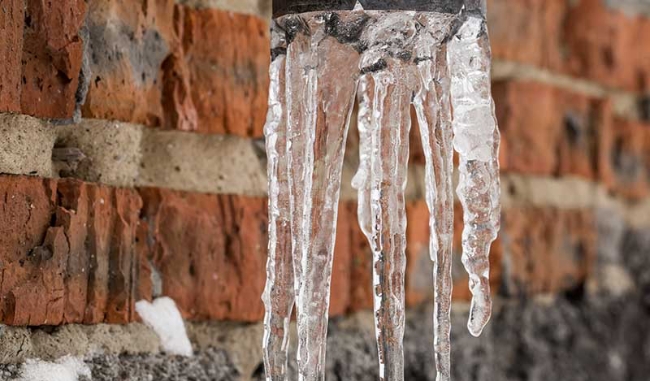Tips to Protect Pipes from Freezing Issues: Important Guidance
Tips to Protect Pipes from Freezing Issues: Important Guidance
Blog Article
Just how do you feel with regards to Preventing and dealing with frozen pipes?

Winter can damage your plumbing, particularly by freezing pipelines. Right here's exactly how to prevent it from taking place and what to do if it does.
Introduction
As temperatures drop, the threat of icy pipes rises, potentially bring about pricey repair services and water damage. Understanding just how to avoid icy pipelines is vital for property owners in cool climates.
Avoidance Tips
Protecting susceptible pipelines
Wrap pipelines in insulation sleeves or utilize warmth tape to safeguard them from freezing temperature levels. Focus on pipelines in unheated or outside locations of the home.
Home heating strategies
Keep indoor rooms appropriately heated up, particularly areas with plumbing. Open up cabinet doors to allow cozy air to distribute around pipelines under sinks.
Just how to recognize frozen pipelines
Try to find decreased water flow from taps, uncommon odors or noises from pipes, and visible frost on revealed pipelines.
Long-Term Solutions
Structural adjustments
Consider rerouting pipelines away from outside walls or unheated locations. Add added insulation to attic rooms, basements, and crawl spaces.
Upgrading insulation
Invest in premium insulation for pipes, attic rooms, and walls. Proper insulation assists maintain regular temperatures and minimizes the threat of frozen pipes.
Securing Exterior Pipes
Garden hoses and exterior taps
Detach and drain pipes yard tubes prior to winter months. Install frost-proof faucets or cover exterior taps with insulated caps.
Understanding Frozen Pipelines
What creates pipes to ice up?
Pipes freeze when revealed to temperatures listed below 32 ° F (0 ° C) for prolonged periods. As water inside the pipes ices up, it increases, putting pressure on the pipeline wall surfaces and possibly creating them to burst.
Risks and problems
Frozen pipes can lead to water disruptions, building damage, and expensive fixings. Burst pipes can flood homes and trigger comprehensive architectural damage.
Indications of Frozen Water Lines
Identifying frozen pipelines early can stop them from bursting.
What to Do If Your Pipes Freeze
Immediate activities to take
If you presume frozen pipes, keep faucets open up to soothe pressure as the ice melts. Utilize a hairdryer or towels soaked in warm water to thaw pipelines gradually.
Conclusion
Protecting against frozen pipelines requires proactive procedures and fast reactions. By recognizing the causes, signs, and preventive measures, homeowners can safeguard their plumbing throughout winter.
5 Ways to Prevent Frozen Pipes
Drain Outdoor Faucets and Disconnect Hoses
First, close the shut-off valve that controls the flow of water in the pipe to your outdoor faucet. Then, head outside to disconnect and drain your hose and open the outdoor faucet to allow the water to completely drain out of the line. Turn off the faucet when done. Finally, head back to the shut-off valve and drain the remaining water inside the pipe into a bucket or container. Additionally, if you have a home irrigation system, you should consider hiring an expert to clear the system of water each year.
Insulate Pipes
One of the best and most cost-effective methods for preventing frozen water pipes is to wrap your pipes with insulation. This is especially important for areas in your home that aren’t exposed to heat, such as an attic. We suggest using foam sleeves, which can typically be found at your local hardware store.
Keep Heat Running at 65
Your pipes are located inside your walls, and the temperature there is much colder than the rest of the house. To prevent your pipes from freezing, The Insurance Information Institute suggests that you keep your home heated to at least 65 degrees, even when traveling. You may want to invest in smart devices that can keep an eye on the temperature in your home while you’re away.
Leave Water Dripping
Moving water — even a small trickle — can prevent ice from forming inside your pipes. When freezing temps are imminent, start a drip of water from all faucets that serve exposed pipes. Leaving a few faucets running will also help relieve pressure inside the pipes and help prevent a rupture if the water inside freezes.
Open Cupboard Doors
Warm your kitchen and bathroom pipes by opening cupboards and vanities. You should also leave your interior doors ajar to help warm air circulate evenly throughout your home.

Hopefully you enjoyed our section about Preventing and dealing with frozen pipes. Thanks a ton for spending some time to read our piece of content. Do you know about anybody else who is looking into How to Prevent Your Pipes From Freezing? Be sure promote it. Thanks a lot for going through it.
Go Services Report this page